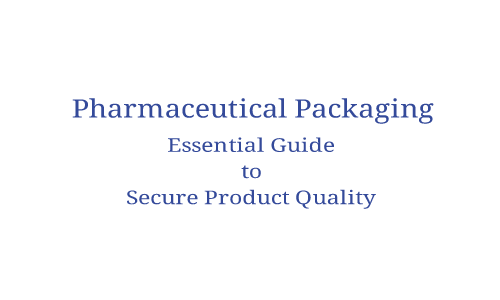Types of Pharmaceutical Packaging
Pharmaceutical packaging covers a range of types, including blister packs, bottles, and ampoules. Each packaging type serves a distinct purpose in ensuring the safety and efficacy of pharmaceutical products during storage, transportation, and use. The right packaging choice can protect against contamination, maintain product integrity, and provide necessary information for patients and healthcare professionals.
Pharmaceutical packaging plays a crucial role in protecting drugs and ensuring their efficacy from manufacturing to the hands of consumers. It serves as a barrier against external factors that can compromise the quality and safety of medications. There are different types of pharmaceutical packaging designed to meet specific needs and requirements.
Let’s explore them below:
Primary Packaging
Blister packs: These are formed by sealing a medication in individual pockets made of plastic or aluminum. Blister packs are commonly used for over-the-counter (OTC) medications and provide protection against moisture, light, and tampering.
Bottles and vials: Plastic or glass bottles and vials with screw caps or dropper tops are widely used for storing liquid medications. They offer easy access and often come with child-resistant closures to prevent accidental ingestion.
Ampoules: Ampoules are small, sealed glass containers that hold a single dose of liquid medication. They are popular for injectable medications and ensure both sterility and accuracy of dosing.
Prefilled syringes: As the name suggests, these are syringes filled with a specific dosage of medication. Prefilled syringes eliminate the need for manual filling by healthcare professionals, ensuring accurate and convenient administration.
Secondary Packaging
Cartons and boxes: Cartons and boxes provide additional protection and serve as the outer packaging for primary packages. They often contain important information such as dosage instructions, warnings, and batch numbers.
Labels and inserts: Labels and inserts provide vital information about the medication, including details about the drug, dosage, route of administration, storage instructions, and potential side effects. They help ensure proper usage and patient safety.
Tamper-evident features: Tamper-evident features include seals, holograms, or breakable caps that indicate if the packaging has been tampered with. These features provide a visual indicator of product integrity and help protect against counterfeits.
Tertiary Packaging
Shipping containers: Shipping containers are sturdy boxes designed to protect pharmaceutical products during transportation. They provide an extra layer of protection against physical damage and ensure the integrity of the products.
Pallets and stretch-wraps: Pallets and stretch-wraps are commonly used for larger shipments of pharmaceutical products. They help secure and stabilize the shipping containers, allowing for safe handling during transit.
Cold chain packaging: Cold chain packaging is used for temperature-sensitive medications that require refrigeration or special handling. It includes insulated containers, ice packs, and temperature-monitoring devices to maintain the required temperature range.
Barrier Properties Of Packaging Materials
One of the primary purposes of pharmaceutical packaging is to create a barrier between the medication and external elements that could compromise its quality. Key features include:
Light protection: Packaging materials are chosen to provide a barrier against light, preventing degradation caused by exposure to UV rays.
Moisture resistance: Moisture is a common enemy of medications. Packaging is designed with materials that provide a sufficient barrier to moisture, preventing degradation due to humidity.
Oxygen barrier: Certain medications are sensitive to oxygen, which can lead to oxidation and reduced efficacy. Packaging is engineered to create an oxygen barrier, preserving the medication’s stability.
Each type of pharmaceutical packaging serves a specific purpose in ensuring the safety, integrity, and effectiveness of medications. From primary packaging that directly contains the medication to secondary packaging that provides information and tamper-evident features, and tertiary packaging that protects during transport, the pharmaceutical industry relies on a well-designed packaging system to deliver high-quality drugs to patients.
Read also: Pharmaceutical Packaging | Ensure Product Quality





